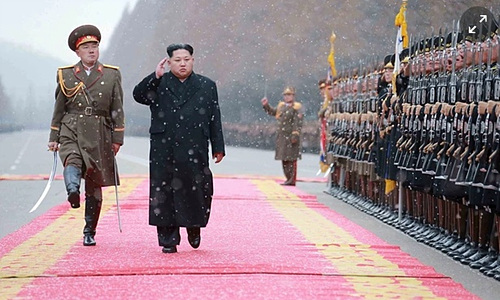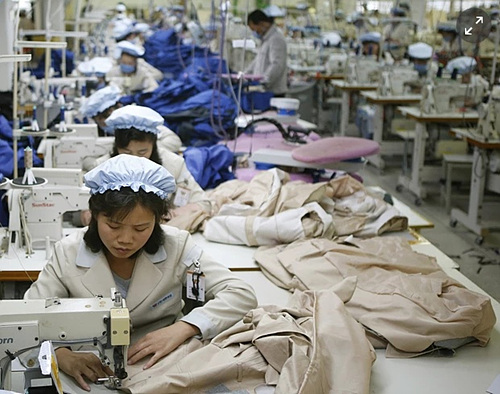- “‘남북 매일 접촉하는 곳’ 없어져, 엄청난 퇴보”
개성공단 중단에 따른 득실 계산에서 이득을 보는 쪽은 어디일까? 북한일까, 남한일까? 이득 보다 손실의 관점에서 보면 남한이 패자다. 영국의 한반도 전문가인 에이단 포스터 카터 영국 리즈대 명예 선임연구원은 영국 <가디언> 기고문을 통해 강조한 점도 바로 개성공단 중단에 따라 남한이 감수해야 할 손실을 지적하고 있다.
포스터 카터 연구원은 먼저 한국 정부가 개성공단을 중단하며 내세운 논리, 즉 개성공단 자금이 북한의 핵-미사일 개발에 흘러들어갔다는 주장에 대해 개성공단이 차지하는 북한 경제에서 차지하는 비중이 1%라고 일축한다. 무엇보다 개성공단은 경제 보다는 정치적 상징성이 컸다. 카터 연구원도 이 점을 지적하고 있다. 카터 연구원은 개성공단이 남북 협력이란 상징성이 있었고, 이 협력이 실제로 작동하고 있다고 강조했다. 그러면서 개성공단 폐쇄로 인해 남북관계는 퇴보하게 됐다고 결론내렸다.
이 같은 우려는 사실 한반도 상황을 어느 정도 아는 국내외 전문가들이 공통적으로 갖는 우려다. 거의 대부분의 연구자들이 개성공단 폐쇄에 따른 남북관계의 퇴행을 우려를 표시했고, 에이단 포스터 카터는 이를 집대성한 것이다. 그러나 북한 핵 개발설을 강하게 외치던 홍용표 통일부 장관은 자신의 주장의 근거를 대지 못하고 고개를 떨궜다. 일국의 정부가 보인 행동이라고 보기엔 참으로 어리석은 일이다.
다음은 뉴스프로가 번역한 가디언 지의 기고문 전문이다. Why North Korea will benefit from Seoul’s great leap backwards Aidan Foster-Carter Friday 12 February 201606.00 GMT Last modified on Friday 12 February 201608.34 GMT
It’s barely February but already 2016 is yielding a grim winter harvest of new dates that will go into future Korean history books, to be remembered and regretted. So far it has been the North, predictably, that has made most of the running. on 6 January Pyongyang got the new year off to a bang with its fourth nuclear test, supposedly an H-bomb. A month later on 7 February the regime made it a double with asatellite launch that functions as a partial test of an inter-continental ballistic missile. High Stakes But now South Korea has got in on the act, adding 10 February to the list of ominous dates. After several days of rumours, Unification minister Hong Yong-pyo confirmed that the South was closing the Kaesong industrial complex, the last remaining inter-Korean joint venture – completely and indefinitely. Here’s what he said: Despite our efforts to support the Kaesong complex, the factory zone is seen as being used for North Korea’s development of nuclear weapons and long-range missiles … We’ve decided to halt the operation of the Kaesong complex to prevent South Korean money from being funnelled into the North’s nuke and missile developments and to protect our companies.” South Korea’s anger and frustration are understandable. Authorities watch and seethe as Kim Jong-un, like his father before him, tests nukes and missiles in defiance of UN resolutions and with seeming impunity. But will closing Kaesong help? on the contrary, I fear it may backfire and harm the South. First, will this hurt the North? That question has two components, economic and political. The Ministry of Unification said this: Until now, about 616 billion Korean won [about $516m] has flowed into North Korea via the Kaesong industrial complex, with 132 billion won alone last year. It is crucial for South Korea to actively get involved … while the international community discusses tougher sanctions [on North Korea] for violating UN resolutions and pushing forward with a nuclear test and missile launch.” That sounds a lot of money, especially for an economy as small and short of hard currency as the DPRK. But Yonhap, South Korea’s semi-official news agency, puts it in perspective by citing unnamed industry watchers who suggest Kaesong earnings comprise just one percent of North Korean trade. The DPRK government keeps 30% of what the South pays towards Kaesong, the other 70% presumably goes to the 55,000 workers as wages. Compared to the $2.48bn Pyongyang earned from exports to China last year, Kaesong’s $111m (gross) or just $33m net is small potatoes. But politics is key, on both sides of the DMZ. Seoul’s Unification ministry says the South has been forced press ahead with sanctions, but what’s the rush? It could as well wait till the UN security council drafts a new sanctions resolution – which is surely closer as the rocket launch concentrates minds. By acting unilaterally now, Seoul is making a conscious choice.
About turn Is it the right choice? one thing is for sure, it is a complete U-turn by South Korea’s president, Park Geun-hye. Just three years ago, new in office, Kim tested her by fomenting a crisis in March and April. Remember all that rhetoric, extreme even by North Korean standards? Or the Chaplinesque staged photos of Kim and his generals, poring over maps of missile flight paths targeting the US– including Austin, Texas? Mostly this was mere talk, but the North also pulled its 55,000 workers out of Kaesong for no discernible reason. Park handled this challenge brilliantly. She kept her head, and patiently negotiated the reopening. By September it was up and running again. Wisely too, Seoul insisted on new management rules to prevent any such unilateral sabotage from recurring. In August 2013 North and South signed a five-point agreement on what they called “the constructive normalisation” of the complex. This bears reading in full. “The two Koreas will not make Kaesong suffer again from the stoppage of the complex … They will guarantee the normal operation of the complex … [which is] not to be affected by inter-Korean situations under any circumstances.” Not under any circumstances. The words are unambiguous, as is their implication now. What South Korea has decided to do is to break a promise, tear up the deal and go back on its word. So what has changed? The latest nuclear and missile tests cannot logically be seen as a deal-breaker. Park negotiated Kaesong’s reopening in 2013 in the shadow of North Korea’s third nuclear test that February, preceded by a satellite launch in December 2012. If that wasn’t a sticking point then, why now? Park’s slogan used to be Trustpolitik. That means working with North Korea as it is, while seeking to change it over time. Like Ostpolitik in Germany, which paid off in the end, this cannot be done overnight. For sure, South Korea is more sinned against than sinning. one expects nothing better from North Korea, but the South should steer a steadier course. Park has barely two more years left in office. Did she lose patience or lose her temper or change her mind? At this rate Park will leave North-South relations in a worse state even than when she found them. Her hard-line predecessor Lee Myung-bak kept Kaesong open, despite two more immediately deadly provocations in 2010: the sinking of the Cheonan, and shelling of Yeonpyeong island. For the past decade, the Kaesong zone has turned a bit of the world’s most heavily armed frontier, impassable for half a century, from a front line into a front door. That in itself was revolutionary, as was Seoul’s intention. A few small and medium enterprises would make money but the main objective was to demonstrate the benefits of cooperation to Pyongyang. Trojan horse The tragedy is that this was working. An article by regional expert Christopher Green claims that Kim Jong-il’s last instructions to his son included one to “move decisively to close [Kaesong] as soon as you see a chance”. Kim senior apparently feared the zone was a Trojan horse, daily exposing 55,000 of his subjects to the palpable superiority of the enemy’s system. Exactly. So why is the South shutting it down. Will this be the end of hopes that the two Koreas might manage the pragmatic cooperation which has transformed ties between China and Taiwan? With no Kaesong, South and North Koreans will no longer be in contact anywhere on a regular everyday basis. That is a great leap backwards. A version of this article first appeared on NK News – North Korea news. | ||||||||||||
※ 이 기사는 외신번역전문매체 뉴스프로 (www.thenewspro.org)에도 함께 게재되었습니다.


2